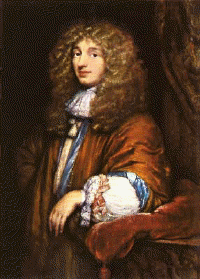Huygens
 The solitary and misunderstood genius
The solitary and misunderstood genius
ESA's Probe onboard Cassini is named after the Dutch scientist Christiaan Huygens, who discovered Titan in 1655. Although he was one of the most famous and most able scientist of his epoch, he worked in relative solitude, therefore he could not influence the science and culture of his time as he would have desired. Furthermore he didn't have friendly relations with the most important scientist of that epoch, Isaac Newton.
Since Galileo Galilei, on a cold night of January 1610, used the first telescope for his investigations, the importance of that new instrument has been clear. As Portuguese oceanic ships showed the way to exploration of the planet Earth, so the telescope opened a window to the exploration of the Universe. Astronomy, the oldest among sciences, had been until then mainly based on hypotheses and conjectures, from then on every improvement has been based on instrumental observations.
Shortly after the telescope had first been used in modern astronomy by Galileo, many other scientists decided to use this new instrument to perform their own studies. All people involved realized immediately that the improvement of the quality of the telescope would have meant the chance of marking the history of science and astronomy.
That happened to Christiaan Huygens during an early spring night in 1655. The Dutch scientist turned a telescope, of far better quality than that used by Galileo, toward Saturn with the intention of studying its magnificent rings. But he was very surprised, when he realized that besides the rings, the planet had also a large Moon: Titan. A very big Moon, larger than Mercury, slightly smaller than Ganymede, one of the Moons of Jupiter which Galileo had discovered a few decades earlier. Huygens did somehow vindicate his countryman Hans Lippershey, an eyeglass maker who first offered the invention of the telescope to the government for military use, from whom Galileo picked up the idea of building a telescope for astronomical research.
Christaan Huygens
However, Huygens can hardly be called an astronomer, even though he made important astronomical discoveries. The famous Dutch scientist did not contribute to seventeenth-century astronomy through his observations, having never systematically observed the sky, nevertheless he contributed as an instrument maker and innovator. He applied himself to the manufacture of telescopes, together with his brother Constantijn, soon after he had developed a theory of the telescope, being the first ever to use the sine law of refraction to derive the focal distances of lenses. The telescopes made by Huygens' brothers made possible the discovery of Titan and detailed observations of Saturn's rings, and Christiaan claimed that those discoveries proved that his telescopes were the best in the world.
This haughtiness is an ever present trait in Huygens' character, as well as his melancholy. He had always considered himself as an outstanding genius, so much that he refused to collaborate with Newton in finding a better and more elegant mathematical solution for the isochronous property of the cycloid in a pendulum-clock, the most important Huygens' discovery in the field of mechanics. By that time Huygens was the recognized leader of European science, and Newton was still far from having published his greatest work, the Philosophiae naturalis Principia Mathematica. Newton suggested a new solution based on the infinitesimal calculus which he had invented eight years before but he had kept secret. It seems as if he wanted to share his secret with Huygens, but the latter refused. The missed collaboration between the two could have meant a lot to the science of that epoch.
The two great scientists of the XVII century had also other reasons for arguing. Newton was a firm upholder of the corpuscular theory of light, on the contrary Huygens formulated a wave theory of light. Newton's reputation decided the dispute momentarily in favor of the English scientist, and it took more than a century to give the right emphasis to the theory of the Dutch scientist. In the field of mathematics Huygens could not reach Newton, because he had not developed the tool of infinitesimal calculus. However, he encouraged the German mathematician Gottfried Leibnitz to publish his treatise on this subject, which Newton had already developed independently but not yet published. This led to a hard dispute between Newton and Leibnitz on the priority of the important mathematical discovery.
Although scientific results obtained by Huygens in the seventieth century were second only to those obtained by Newton, the Dutch scientist was not thoroughly recognized for the work done in his time, neither had influenced the development of science as he could have done, as he preferred solitary contemplation to team efforts. In addition, all the controversies with Newton have lowered Huygens status in the history of science.
ESA's mission to Titan is now trying to give back honor to the Dutch scientist. 345 years after Huygens' discovery of Titan, the largest Saturn Moon is on the way to being completely understood, as Huygens Probe onboard the Cassini Orbiter is cruising toward it. In a few years, we will know a lot of details about Titan's atmosphere, about its surface, about the mystery of the origin of life, since its organic chemical cycles are believed to be a natural laboratory for replaying some of the steps leading to life. The circle started by Huygens will be completed there, 350 years later.

